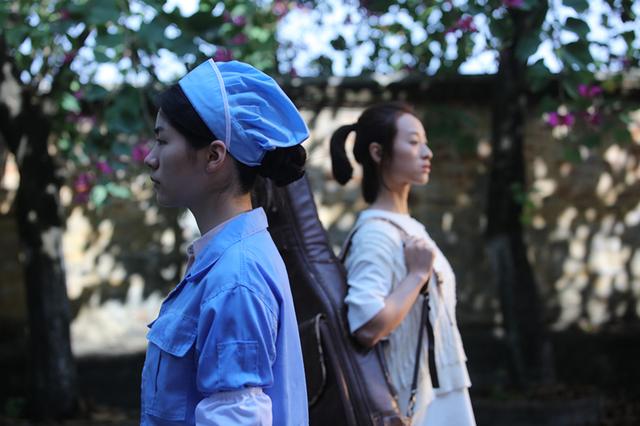The Relationship Between Women’s Bodies and Identity in China

- Historical and traditional physical discipline
The phenomenon of foot-binding during the Ming and Qing dynasties was an extreme manifestation of the feudal ritualistic control over women’s bodies. This practice reinforced the social hierarchy of ‘male superiority and female inferiority’ through physical modification and restriction of mobility[1]. In traditional societies, a woman’s body was often valued primarily for its reproductive function, with identity confined to the roles of ‘mother’ or ‘wife,’ while public participation was largely denied.
However, beyond foot-binding, other forms of bodily discipline existed. Confucian ideals of femininity emphasized obedience, modesty, and subservience, shaping women’s physical comportment and behavior. These expectations extended to dress codes, hairstyles, and even gestures, embedding bodily discipline into daily life.
- Bodily Emancipation and Contradictions in the Modern Age
With the rise of the market economy following China’s reform and opening-up policies, the female body became deeply embedded in consumer culture. Media-driven aesthetic standards, such as the ideal of being ‘white, thin, and young’ or having a ‘net-famous face,’ have subjected women to increasing scrutiny. On the surface, women are encouraged to ‘choose their own’ beauty standards, yet in reality, self-objectification is internalized as a form of ‘empowerment'[2].
The tension between traditional and modern ideals has also led to contradictions. While contemporary women are encouraged to embrace self-expression and autonomy, societal expectations regarding marriage, childbearing, and physical appearance remain deeply ingrained. This paradox results in new forms of bodily discipline, where women feel compelled to conform to modern beauty standards while simultaneously resisting societal pressures.
- Reconstruction of identity in policy and legal frameworks
The one-child policy (1980-2015) integrated women’s reproductive capacities into national demographic planning, often at the cost of bodily autonomy[3]. The policy not only affected reproductive choices but also contributed to gender imbalances and reinforced traditional patriarchal expectations regarding motherhood and familial duty.
However, legislative shifts in recent years have signaled gradual change. The lifting of birth restrictions, the implementation of anti-sexual harassment laws, and growing discourse on workplace discrimination highlight an evolving legal landscape. Despite this, enforcement remains inconsistent, and societal attitudes often lag behind policy changes[4].
- Resistance and Reconstruction: Autonomous Expressions of the Body
In response to aesthetic and social pressures, many Chinese women have begun reclaiming their bodily autonomy through digital activism. Female bloggers challenge aesthetic hegemony by showcasing ‘imperfect bodies,’ pushing back against homogenized beauty ideals. Moreover, contemporary artists such as Cao Fei explore gender identity and bodily autonomy in the digital era. Her work RMB City[5] examines how virtual spaces provide alternative means for identity construction and self-representation.
Beyond the digital sphere, grassroots feminist movements, such as the Feminist Five, have sought to challenge gender discrimination through activism. Their 2015 arrest for protesting against sexual harassment on public transport underscored the constraints placed on feminist discourse in China. Nevertheless, their activism sparked international discussions on gender-based violence and bodily autonomy, amplifying feminist discourse within China.
The intersection of gender, policy, and digital culture continues to shape the evolving discourse on women’s bodies and identities in China. As legal frameworks shift and digital activism grows, the struggle for bodily autonomy remains a crucial aspect of contemporary feminist movements.
[1] Michel Foucault, Discipline and Punish: The Birth of the Prison, trans. Alan Sheridan (New York: Vintage Books, 1975).
[2] Rosalind Gill, Gender and the Media (Cambridge: Polity Press, 2007).
[3] Wikipedia Contributors, “One-Child Policy,” Wikipedia (Wikimedia Foundation, December 11, 2018), https://en.wikipedia.org/wiki/One-child_policy.
[4] Emily Martin, The Woman in the Body: A Cultural Analysis of Reproduction (Boston Beacon Press, 1987).
[5] Fei Cao, “NET ART ANTHOLOGY: RMB City,” NET ART ANTHOLOGY: RMB City, October 27, 2016, https://anthology.rhizome.org/rmb-city.
Bibliography
Cao, Fei. “NET ART ANTHOLOGY: RMB City.” NET ART ANTHOLOGY: RMB City, October 27, 2016. https://anthology.rhizome.org/rmb-city.
China Eco Insights. “The Future of Renewable Energy in China.” YouTube video, 12:30. May 15, 2023. Accessed June 10, 2024. https://youtu.be/8-ig_lnO7uU?si=SrOnE04MVQXBV1fv.
Foucault, Michel. Discipline and Punish: The Birth of the Prison. Translated by Alan Sheridan. New York: Vintage Books, 1975.
Gill, Rosalind. Gender and the Media. Cambridge: Polity Press, 2007.
Martin, Emily. The Woman in the Body: A Cultural Analysis of Reproduction. Boston Beacon Press, 1987.
Wikipedia Contributors. “One-Child Policy.” Wikipedia. Wikimedia Foundation, December 11, 2018. https://en.wikipedia.org/wiki/One-child_policy.



